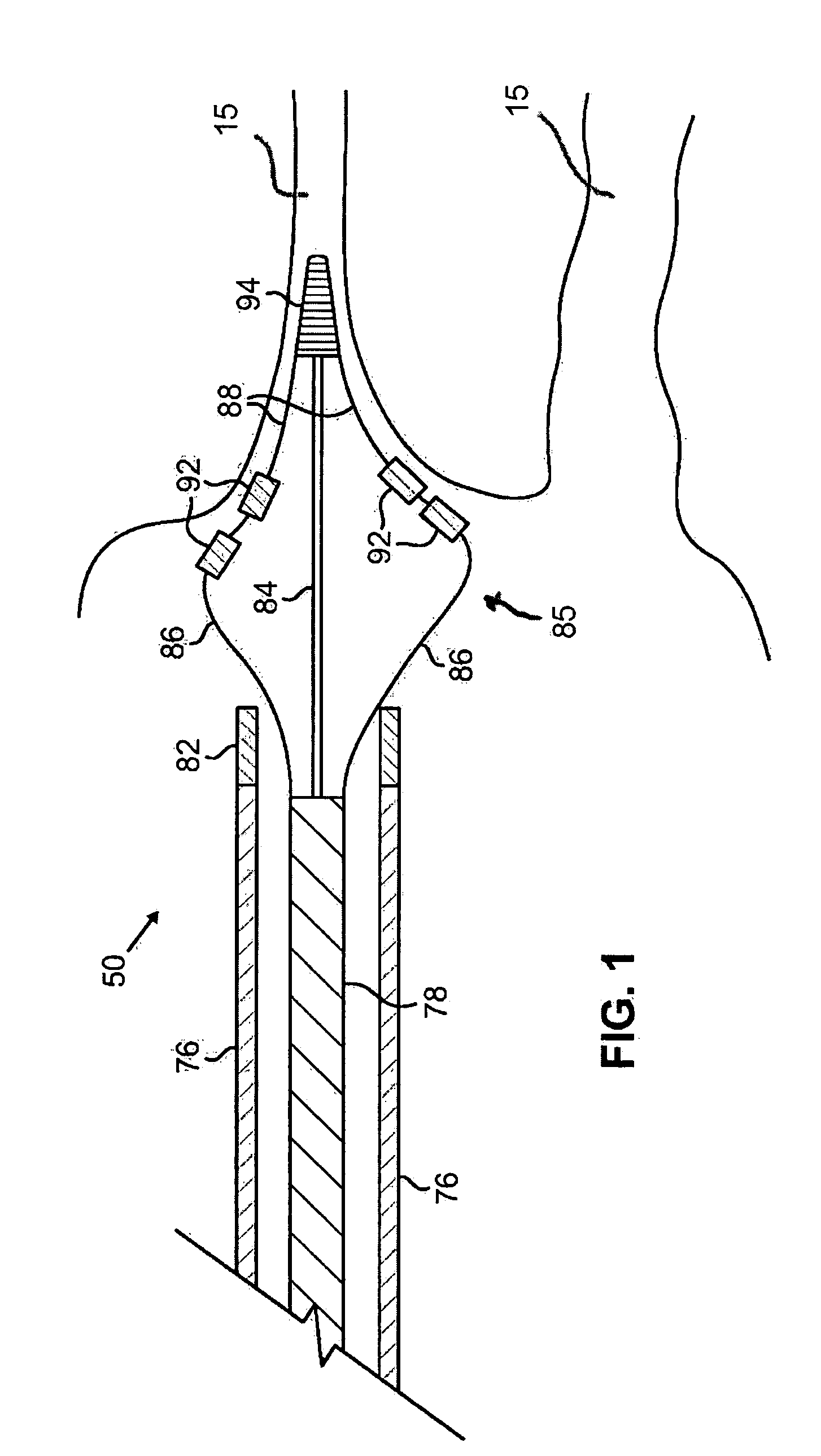Ablation catheter
a catheter and catheter tube technology, applied in the field of catheters and methods, can solve the problems of organ malfunction, lack of synchrony, and ineffective pumping of blood into the ventricl
- Summary
- Abstract
- Description
- Claims
- Application Information
AI Technical Summary
Benefits of technology
Problems solved by technology
Method used
Image
Examples
Embodiment Construction
[0046] Reference will now be made in detail to the present embodiments of the invention, examples of which are illustrated in the accompanying drawings. Wherever possible, the same reference numbers will be used throughout the drawings to refer to the same or like parts.
[0047] The present invention provides catheters for performing targeted tissue ablation in a subject. In preferred embodiments, the catheters comprise a tubular body member having a proximal end and distal end and preferably a lumen extending therebetween. The catheter is preferably of the type used for performing intracardiac procedures, typically being percutaneously introduced and advanced from the femoral vein in a patient's leg. Alternative methods involve percutaneous introduction into the jugular vein of the patient's neck, or other anatomical entry point that can be used to access the target location within the patient. The catheter is preferably introducable through a sheath and also preferably is advancabl...
PUM
 Login to View More
Login to View More Abstract
Description
Claims
Application Information
 Login to View More
Login to View More - R&D
- Intellectual Property
- Life Sciences
- Materials
- Tech Scout
- Unparalleled Data Quality
- Higher Quality Content
- 60% Fewer Hallucinations
Browse by: Latest US Patents, China's latest patents, Technical Efficacy Thesaurus, Application Domain, Technology Topic, Popular Technical Reports.
© 2025 PatSnap. All rights reserved.Legal|Privacy policy|Modern Slavery Act Transparency Statement|Sitemap|About US| Contact US: help@patsnap.com



